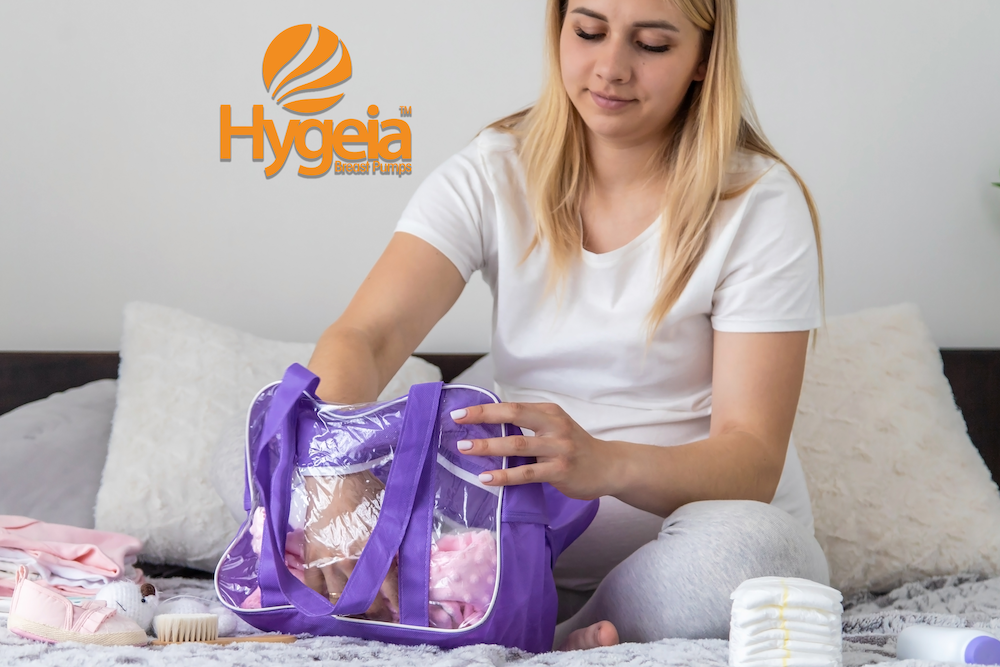
Giving birth is a big event and preparing for labor and delivery can feel overwhelming, but packing your hospital bag doesn’t have to be. This hospital bag checklist will help you gather everything you need for a comfortable and smooth experience, so you can focus on welcoming your little one.
For Mom: Comfort and Essentials
First and foremost, pack for yourself. Here is what you should prioritize:
Comfortable Clothing: Pack a few loose-fitting gowns or pajamas for labor and postpartum. Consider something you don’t mind getting messy. A robe and slippers are great for walking around the hospital.
Socks: Technically, this fits with clothing, but it’s important enough for its own bullet item. Hospitals can be chilly, so bring a few pairs of warm socks.
Toiletries: Bring travel-sized toiletries like shampoo, conditioner, toothpaste, a toothbrush, and deodorant. Some hospitals provide these, but having your own familiar brands can be comforting.
Personal Care Items: Don’t forget essentials like your glasses or contacts case, lip balm (hospital air can be dry!), hair ties, and any medications you regularly take.
Pillow: Your own pillow can make a big difference in comfort. Label it clearly so it doesn’t get mixed up with hospital linens.
Snacks: Labor can be long, and you might want snacks for yourself (check hospital policy on food during labor). Pack healthy options like granola bars, dried fruit, or nuts. After delivery, snacks will be helpful as well.
Phone and Charger: Capture those precious first moments and stay in touch with loved ones.
Going-Home Outfit: Choose something comfortable and loose-fitting. Remember, you’ll still have a postpartum belly.
Postpartum Essentials: The hospital will likely provide some postpartum supplies, but you might want to bring your own, like extra-long pads and a peri bottle.
For Breastfeeding
If you plan to breastfeed, you’ll want to be prepared with all the goods in case the hospital cant supply them.
Breast pump: Bringing your breast pump to the hospital can be helpful even if you don’t intend to pump right away. This allows you to get familiar with it and ask the hospital’s lactation consultant any questions about it while there. A pump can also be helpful in establishing your milk supply.
Nursing bra: A supportive and comfortable nursing bra is essential. Pack a couple, as they can get messy.
Nursing pads: Leaking is common, especially in the early days. Nursing pads will keep you dry and comfortable.
Nipple cream: In case of cracked, sore or dry nipples, nipple cream is a must-have. It can provide relief and promote healing. Lanolin-based creams are a popular choice.
Lactation consultant information: Have the contact information for a lactation consultant readily available in case you need support. Your hospital may also have them on staff.
For Baby: Comfort Items
While a mother can provide all newborn truly needs, there are a few additional items that can bring him or her comfort.
Onesies: Pack a few onesies in different sizes (newborn and 0-3 months). No matter how the baby is measuring pre-birth, he or she could be any size and you want to be ready.
Socks or Booties: Keep those tiny feet warm.
Hats or mittens: While the hats are for warmth, the mittens are for safety. Believe it or not, baby fingernails can turn dangerous quickly, so the protection from scratches will be appreciated.
Swaddles or Blankets: Bring a soft blanket for swaddling and a receiving blanket for the trip home.
Going-Home Outfit: Choose something cute and comfortable for your baby’s first journey home.
Car Seat: This is essential for safely transporting your baby home. Make sure it’s properly installed in your car.
Optional items:
You don’t want to overpack, but here are some items to consider bringing to make your stay more relaxed.
Entertainment: Books, magazines, or a tablet can help pass the time during labor. It’s better to have them and not need them, rather than finding yourself in need of a distraction.
Music: Create a playlist of calming or uplifting music. You might have a playlist for labor and another for rocking and cuddling your baby after delivery.
Essential Oils: If you use essential oils, check with the hospital about their policies, especially before using a diffuser.
Small Gift for Siblings: If you have other children, a small gift for them can make them feel included when they come to meet their new baby brother or sister.
Thank You’s: Consider pre-writing thank you notes for the hospital staff. Another idea is to bring a snack or treat to leave at their circulation desk as another way of saying thank you for their support during this special time.
Tips for Packing Your Hospital Bag:
Here are a few additional tips to keep top of mind while packing.
Pack early: Aim to have your bag packed by 36 weeks of pregnancy. It can’t hurt to be prepared.
Use a smaller bag: This will prevent you from overpacking.
Organize your bag: Use smaller bags or pouches to separate items. Keep in mind that someone else (your partner, parent, or a nurse) could be the one going through your bag to get items you need. This will making finding the right thing easier.
Keep essentials accessible: Place items you’ll need during labor in an easily accessible spot.
Hygeia is here to support you:
At Hygeia Health, we believe every mom deserves access to a high-quality breast pump and we’re committed to supporting breastfeeding journeys. A reliable breast pump can make a huge difference in your breastfeeding experience, so we help moms get a 100% insurance-covered breast pump. Don’t miss out on this opportunity to make your breastfeeding journey smoother and more successful.
Packing your hospital bag is an exciting step in preparing for your baby’s arrival. With this checklist and a little planning, you’ll be ready for anything!
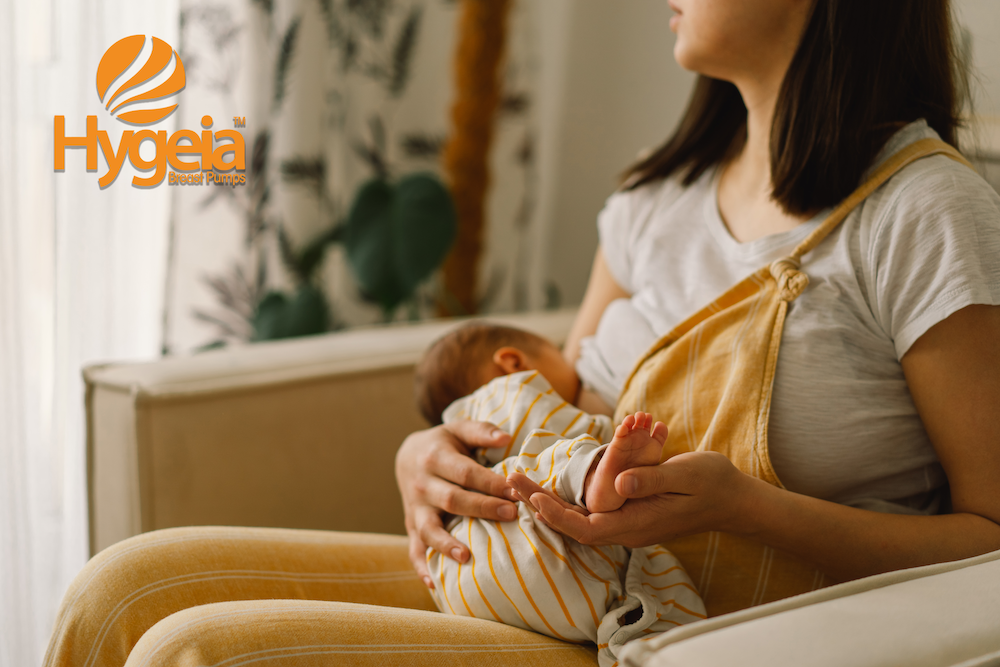
Navigating the early days of breastfeeding can be overwhelming, especially for a mom who finds herself in the dreaded “pump trap” when trying to manage engorgement and proper milk supply. Understanding how your body regulates milk production is key to a successful breastfeeding journey.
Breast milk is packed with antibodies, nutrients, and everything your little one needs to grow and thrive. One of the most fascinating aspects of breastfeeding is how your body knows exactly how much milk to make. This is all thanks to a complex system of hormones and feedback loops. Understanding how breast milk supply regulation works can help you feel more confident in your breastfeeding journey.
This post will break down the fascinating science behind milk supply, explain how to avoid the “pump trap” that can exacerbate engorgement, and offer tips for managing your milk production long-term.
What to know about establishing your supply
The first few weeks after birth are crucial for establishing a good milk supply. Your body works on a supply-and-demand system. The more frequently and effectively your baby nurses, or you pump, the more signals your body receives to produce milk. This is why frequent milk removal is so important, especially in the early days.
It’s important to remember that your body is designed to regulate milk production; you’re not solely responsible for making it happen. Hormones play a crucial role. Prolactin, the “milk-making” hormone, is released when your baby nurses. More prolactin means more milk. Oxytocin, sometimes called the “love hormone,” is also released during breastfeeding. It triggers the muscles around the milk glands to contract, helping milk flow—this is the “let-down” reflex.
What to know about the role of feedback loops
Your body uses feedback loops to fine-tune milk production. Imagine it like a thermostat. When your baby nurses or you pump, milk is removed from your breasts. This signals your body to produce more milk to replenish the supply. The emptier your breasts become, the stronger the signal to make more milk. Conversely, if your breasts are full, your body receives signals to slow down production.
This is why it’s important to breastfeed or pump frequently and on demand, especially in the early weeks. Responding to your baby’s hunger cues and allowing them to nurse for as long as they want helps establish a strong milk supply. It also helps to avoid supplementing with formula unless medically necessary, as this can interfere with your body’s natural supply-and-demand system.
What is the “pump trap” and how to avoid it
The ‘pump trap’ happens when a mom is pumping to relieve engorgement, but it becomes a never-ending cycle because the body continues overproduce.
While many moms worry about producing enough milk, the pendulum swings both ways as oversupply and engorgement can also be a challenge. Engorgement can be very uncomfortable, potentially leading to problems like mastitis, and making it difficult for babies to latch.
Frequent feedings or pumping sessions are crucial for establishing a healthy milk supply, but they can also contribute to overproduction, especially when pumping for relief. While your baby’s cues will tell you when they’re finished feeding, pumping requires you to decide when to stop. Completely emptying your breasts with each pumping session signals your body to continue producing large amounts of milk. If you’re experiencing oversupply, the key, is to avoid completely draining your breasts when you pump.
It is also important to note that if you pump before breastfeeding in order to relieve engorgement and tightness in your breasts, express only enough milk to allow your baby to latch comfortably.
How to best manage long-term milk supply
As your baby grows and their feeding patterns change, your milk supply will adjust accordingly. Your body is remarkably adaptable and can meet your baby’s changing needs. Even if you experience a temporary dip in supply due to illness, stress, or changes in routine, your body can usually bounce back with consistent milk removal.
There are several factors that can influence milk supply and it is valuable to be aware of them as a means of knowing what can help you manage over or under supply.
Frequency of milk removal: As mentioned already, frequent breastfeeding or pumping will help your body increase supply.
Effectiveness of milk removal: Ensuring your baby is latching properly or that your pump is working efficiently is crucial.
Hydration and nutrition: Staying well-hydrated and eating a healthy diet supports milk production.
Certain medications: Some medications can interfere with milk supply. Talk to your doctor about any medications you’re taking.
Medical conditions: Certain medical conditions, such as thyroid problems or retained placental fragments, can affect milk supply.
When to seek help
It’s important to also know that breast engorgement is not always a sign of oversupply, so if you are experiencing engorgement but feel it isn’t due to oversupply don’t hesitate to reach out to a lactation consultant or your healthcare provider. They can assess your situation and provide personalized guidance and support. They can help you optimize your breastfeeding technique, address any underlying issues, and develop a plan to boost your milk supply if needed.
We’re Here to Support You:
Having a reliable and easy-to-use pump can be a tremendous relief to a mom as she helps her body regulate milk supply, especially in the early weeks. We’re committed to supporting breastfeeding mothers in all aspects of the journey and even offer a way for moms to get a 100% insurance covered breast pump.
Our high-quality breast pumps are designed to make pumping easier and more efficient so that, in the end, you have a way to get your one-of-a-kind milk to your baby. To apply for a 100%-insurance-covered breast pump, simply visit our website and fill out the application form. We’ll review your application and contact you with the next steps.
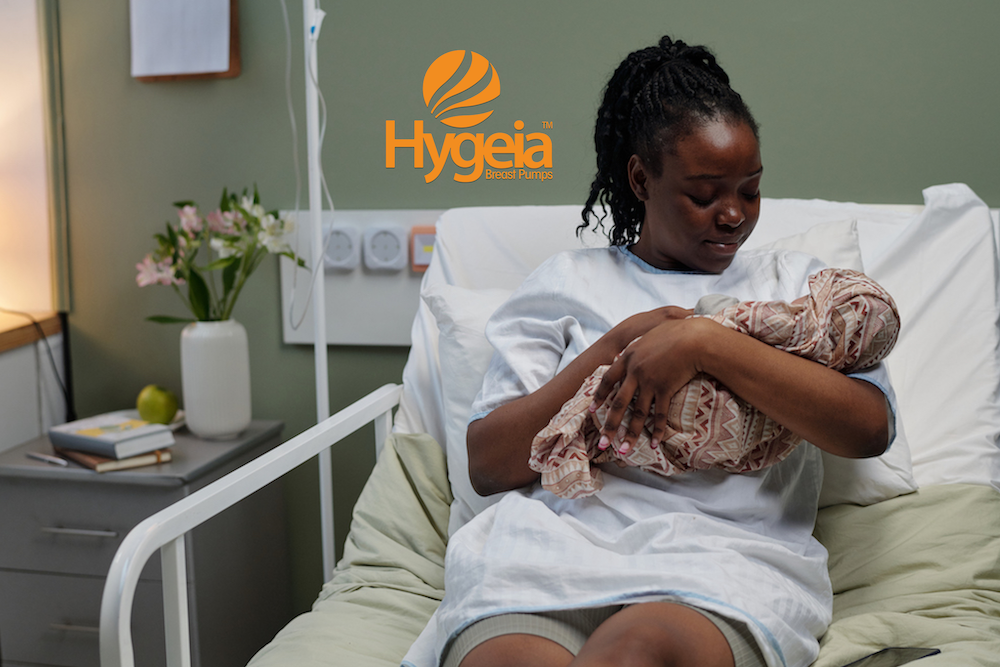
Bringing your baby home is an exciting time, but it can also be filled with anxieties, especially when it comes to breastfeeding. You might be wondering, ‘When will my milk come in?’ and feeling anxious if it doesn’t seem to be flowing immediately. Rest assured, your body is working hard behind the scenes!
This blog post will explain what’s happening in those crucial early days, why your milk supply may not be abundant right away, and what your baby actually needs in the first few days after birth.
Understanding Colostrum
The first thing to put your mind at ease it to understand that milk is not the first thing your baby needs to consume after birth. In their initial days, your breasts produce colostrum, a thick, yellowish fluid packed with nutrients and antibodies. Think of it as liquid gold for your baby! This precious first milk is all your newborn needs in those early days.
With that, it’s important to not fret over the small amount of colostrum your body is producing. Colostrum is incredibly concentrated and your baby’s tiny stomach doesn’t need much. It’s completely normal to produce only small amounts of colostrum in the first few days. Focus on frequent feedings and observe your baby’s cues.
Maximizing Skin-to-Skin Contact
Skin-to-skin contact is crucial during the first days of your baby’s life. Holding your baby against your bare chest helps regulate their temperature, promotes bonding, and encourages frequent breastfeeding, which can also trigger milk production.
Skin-to-skin contact stimulates the release of oxytocin, a hormone crucial for both milk production and bonding. Oxytocin helps contract the muscles around the milk-producing glands, facilitating milk ejection, also known as let-down. It also stimulates the release of prolactin, another important hormone for milk production.
Additionally, implementing skin-to-skin contact immediately after birth can encourage early latching. With skin-to-skin time, your baby is more likely to instinctively crawl towards the breast and latch naturally. This experience also helps the baby learn to recognize and respond to hunger cues, leading to more effective feeding.
Waiting on Milk to Come In with Rest and Recovery
It can take 3-5 days for your milk to come in after you’ve given birth. During this time, it’s crucial to avoid stressing about your milk supply and instead rely on the colostrum while you rest. Rest is essential for both you and your baby. Allow yourself time to recover from childbirth and focus on bonding.
The onset of milk production is often indicated by changes in your breast temperature, milk leakage, and breast fullness or engorgement. The experience varies among mothers, with some experiencing a gradual increase in milk production, while others may experience a more sudden “let-down.” This timeframe is a general guideline, based on the experiences of many mothers. If you have any concerns once you’re home, it’s important to consult with your doctor or a lactation consultant.
Maintaining Hydration and Nutrition
In addition to rest, hydrating and nourishing your body is crucial for milk production.
Hydration: Drink plenty of water throughout the day. Keep a water bottle handy at your bedside, especially in the hospital.
Healthy Diet: Focus on a balanced diet that includes:
Fruits and vegetables: Load up on colorful produce to provide essential vitamins and minerals.
Protein: Include lean protein sources like chicken, fish, beans, and lentils.
Whole grains: Choose whole-grain options like brown rice, quinoa, and whole-wheat bread for sustained energy.
Remember that your appetite may fluctuate in the early days. Listen to your body’s cues, but make an effort to eat nutritious foods to support your milk supply.”
Supporting Your Breastfeeding Journey
Milk supply can be a concern for many new mothers. At Hygeia Health, we understand that breast pumping can effectively stimulate milk production. Frequent pumping sessions, ideally every 2-3 hours, mimic a newborn’s feeding pattern and signal your body to increase milk production. This consistent stimulation helps to establish and maintain a good milk supply.
While pumping can be a valuable tool, direct breastfeeding remains the most natural and efficient way to stimulate milk production and build a strong bond with your baby.
Our high-quality breast pumps are designed to make pumping easier and more efficient so that, in the end, you have a way to get your one-of-a-kind milk to your baby. To apply for a 100%-insurance-covered breast pump, simply visit our website and fill out the application form. We’ll review your application and contact you with the next steps.
These early days are a precious time for you. Focus on bonding with your baby, and trust your body to do what it was made to do.
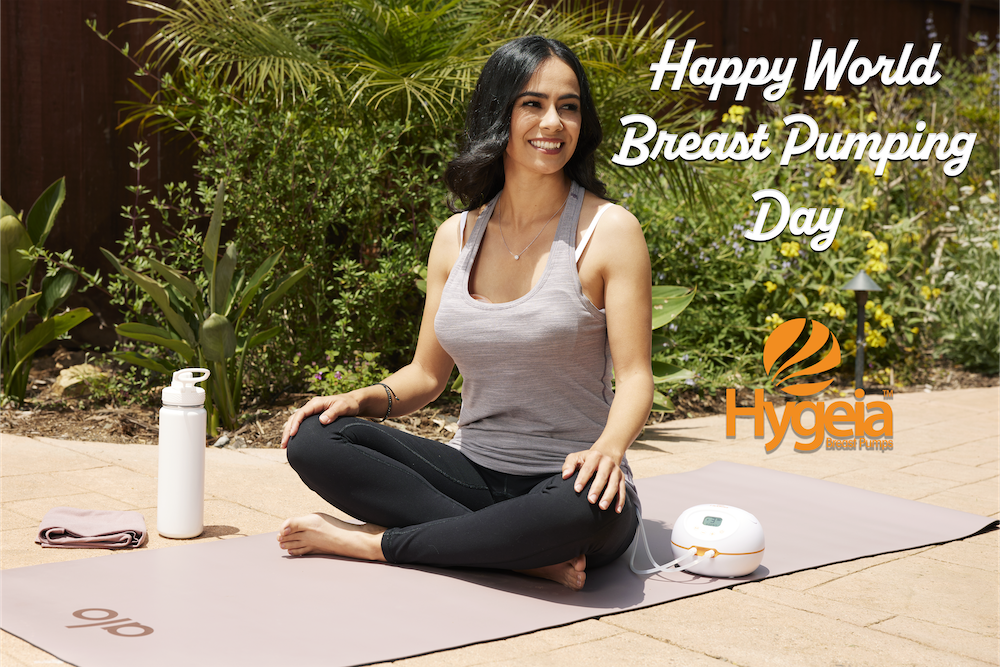
World Breast Pumping Day, observed annually on January 27th, is a special day to acknowledge the incredible dedication and effort of mothers who pump breast milk for their babies. Today we celebrate the strength, resilience, and commitment of the amazing women who prioritize the health and well-being of babies with breastfeeding.
Breast pumping empowers mothers to provide the invaluable benefits of breast milk to their babies even when they cannot be with them directly, but it is not achieved without great effort. It is a chosen responsibility motivated by love; it takes time and effort to learn how to pump well. Whether it’s returning to work, managing a busy schedule, or overcoming challenges related to breastfeeding, pumping mothers demonstrate incredible strength and determination.
History of Breast Pumping
It may surprise most to learn that breast pumps have been around since the 1800s, initially used for medical purposes like treating inverted nipples and assisting infants who were too small or too weak to nurse. It was 1991 before the first first electric breast pump was introduced. This significant shift was particularly impactful because mothers now had access electric breast pumps they could use in their own homes or anywhere of their choosing.
It was 2017 when Wendy Armbruster established World Breast Pumping Day to celebrate and support mothers who pump. Armbruster, a Certified Lactation Educator, had created an award-winning hands-free pumping bra, the PumpEase™, another tool that simplifies a mom’s ability to pump efficiently.
As some women may experience challenges with milk production, breast pumps can be a valuable tool. Pumping stimulates milk production and can help women maintain their milk supply, making it easier to feed their babies, whether they’re at work, traveling, or simply need a break.
Why It Matters
Breast milk truly matters in our world, and breast pumping plays a role in its availability. This liquid gold delivers optimal nourishment to infants around the world and promotes both the short and long-term health of babies and mothers. Breast milk helps give children the best start in life. It’s like an all-in-one of penicillin, therapy, and ice cream, but without breast pumping, many babies would never benefit from mother’s milk.
Breast Pumping Day is an opportunity to support and acknowledge the amazing job of all mothers. Without them, none of us would be here. Pumping moms greatly appreciate this day marked out for them and the extra effort they make to achieve the ability to breastfeeding.
How To Celebrate
Whether you are a currently pumping mother, you formerly pumped, you know someone pumping, or you just want to support the efforts made by others, there are ways to celebrate this special day.
Share your pumping story. If you were a pumping mom or you are new to pumping, today is a day to feel proud of your accomplishments. It is not an easy feat. Share your stories with others. If you are not a pumping mom, take time listen to someone else’s story.
Surprise a mom. Do you know a pumping mom? She may not even realize this special day exists, so surprise her in an unexpected way. Make her lactation cookies. Send a small gift. Help her with some household chores or drop off a meal. Even something as simple as an encouraging phone call or text will be impactful
Reach out. Be an advocate and supporter to the breastfeeding moms you know. You can offer words of encouragement or simply ask them about their journey. It is especially important to the moms who are having a hard time breast pumping or breastfeeding. Give them the opportunity to speak freely about their struggles and encourage them to seek support.
Supporting Your Breastfeeding Journey
At Hygeia Health, we understand the challenges and triumphs of the breastfeeding journey. We are proud to support mothers with our innovative breast pumps, designed to make pumping easier, more efficient, and more comfortable.
Our high-quality breast pumps are designed to get your one-of-a-kind milk to your baby. To apply for a 100%-insurance-covered breast pump, simply visit our website and fill out the application form. We’ll review your application and contact you with the next steps.
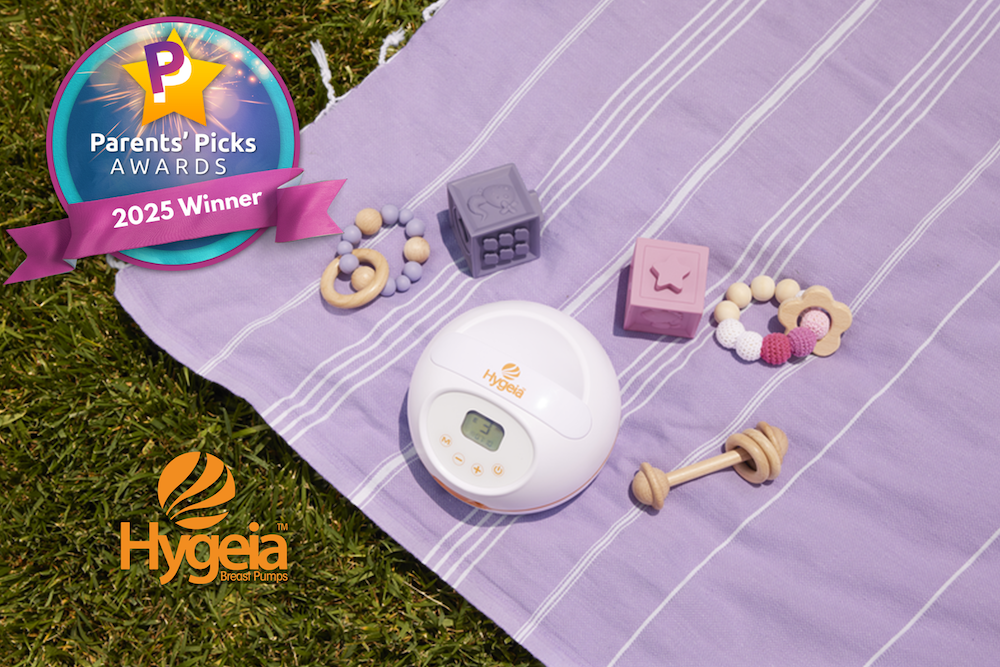
Hygeia Health is thrilled to announce that the Hygeia Express breast pump has been named a 2025 Parents’ Picks Awards winner for Best Baby Products & Toddler Products. This prestigious award recognizes the very best products for parents and children. Hygeia is honored to be included among such esteemed brands.
Exceptional Features Found in Hygeia Express
The Parents’ Picks Awards program rigorously evaluates products based on criteria like quality, safety, and ease of use. The Hygeia Express was recognized for its exceptional features, including:
Hands-free pumping: Greater comfort and flexibility
Hospital-grade strength: Powerful suction for efficient milk expression
Cordless design: Ultimate freedom and portability
Customizable modes: Personalized pumping experience
Access to lactation support: Support on the breastfeeding journey
The Value of Parents’ Picks Awards
Choosing the right products for your baby can feel overwhelming. Navigating the vast sea of options is often a daunting task for a parent. That’s where the Parents’ Picks Awards come in. This valuable resource provides expert recommendations based on rigorous testing and feedback from other parents, helping moms and dads make informed decisions for their little ones.
“With over 45 years of combined experience in the industry, we are the go-to source for parents and professionals seeking the best products for their children and families,” states Parents’ Picks Awards. “We guarantee that each product or service listed on [our] site comes highly recommended by our team of parents, kids, and experts.”
Hygeia Health Empowers Mothers
Hygeia Health shares Parent’s Picks Awards’ commitment to empowering mothers, particularly those on the journey of breastfeeding.
“We believe that every mother deserves access to high-quality products and support,” stated Kelly Cuellar, Vice President of Sales at Hygeia Health. “We are honored to receive this prestigious award and are dedicated to continuing to provide innovative and supportive solutions for breastfeeding mothers.”
Hygeia not only offers award winning pumps, but also helps moms get them at no cost. See if you qualify for a 100% insurance-covered pump today.

Nearly every part of parenthood has its ups and downs and breastfeeding is no exception. While it can be beautiful and rewarding, it is suddenly tough when your baby refuses the breast. It can be frustrating and disheartening. Just remember, you are not alone and there are strategies for overcoming the challenge of breast refusal.
This blog post will dive into the solutions to help you overcome this hurdle and get your breastfeeding journey back on track.
Understanding the Reasons for Breast Refusal
First, there are several reasons why a baby might refuse the breast, and it is important to understand where baby may be coming from in his or her refusal.
Painful latch: If your baby is experiencing pain while latching, they may refuse to breastfeed.
Tongue-tie or lip-tie: These conditions can make it difficult for your baby to latch properly and you may need to pursue treatment.
Illness: Do you lose your appetite when sick? Baby is no different. If your he or she is sick, they may be less interested in breastfeeding.
Distractions: Noise, light, or other distractions can interfere with breastfeeding. If you are trying to nurse with a cover, this can sometimes be problematic for baby’s attention also.
Stress or Overwhelm: Both you and your baby can experience stress, which can impact breastfeeding. It can impact baby’s ability to latch and your milk production.
Tips for Overcoming Breast Refusal
Identifying the possible cause of the issue can set you on track for which solution will help you overcome the obstacle.
Consult a Lactation Consultant: A lactation consultant can assess your baby’s latch and offer personalized advice.
Skin-to-Skin Contact: Spend quality time skin-to-skin with your baby. The direct physical contact can help calm them and encourage them to latch.
Try Different Positions: Experiment with different breastfeeding positions to find what works best for you and your baby.
Express Milk: If your baby is refusing the breast, you can express milk and feed it to them with a bottle or syringe or small spoon. With clean hands, you can even try using your pinky finger dipped in milk to feed baby.
Avoid Pacifiers: Using a pacifier can interfere with breastfeeding if your baby is already struggling with nursing.
Be Patient: Be patient and persistent. It may take time for your baby to adjust.
Tips for Returning To Breast after Bottle
Choose the Right Time: Try to breastfeed your baby when he or she is calm and relaxed, such as before a nap or bedtime.
Start Slowly: Begin by offering the breast for short periods, gradually increasing the duration as your baby gets used to it.
Express Milk and Offer It: Expressing some milk and offering it to your baby using a syringe, a spoon, or your finger as you hold them skin to skin can help them associate the taste of breast milk with your breast.
Be Patient: It may take several attempts for your baby to adjust to breastfeeding once he or she has taken to feeding from a bottle. Don’t get discouraged.
Hygeia Health: Supporting Your Breastfeeding Journey
At Hygeia Health, we know challenges like breast refusal are real for both first-time and seasoned mothers. Our high-quality breast pumps are designed to make pumping easier and more efficient so that, in the end, you have a way to get your one-of-a-kind milk to your baby.
To apply for a free breast pump, simply visit our website and fill out the application form. We’ll review your application and contact you with the next steps.
Remember, you’re not alone. With patience, persistence, and the right support, you can overcome breast refusal and enjoy the benefits of breastfeeding.






